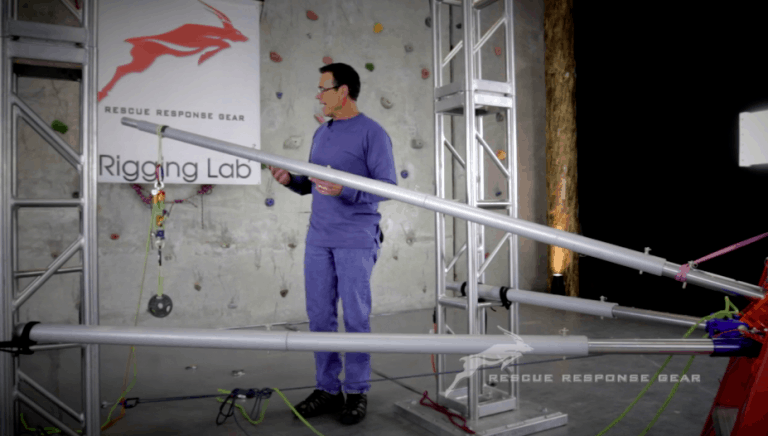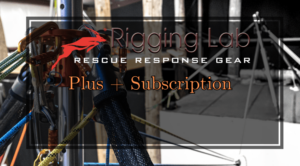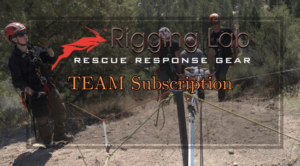Replicating an Aerial Ladder with Timber: Creating a High Directional Anchor System
In the world of technical rescue, improvisation can mean the difference between success and failure. While modern rescue teams rely heavily on specialized equipment like aerial ladders, there are times when these tools aren’t available—in remote wilderness locations, disaster zones, or during prolonged operations where traditional gear can’t be transported. In these situations, understanding how to construct a high directional using timber is a critical skill.
Building an artificial high directional (AHD) from timber can replicate many of the functions of an aerial ladder, providing a crucial elevated anchor point for lifting, lowering, and transitioning loads. This traditional technique isn’t just a fallback—it’s a testament to the resourcefulness of rescuers who adapt to their environment and make the most of what they have on hand.
Why Build a Timber-Based High Directional?
Imagine you’re responding to a rescue in a rugged wilderness area. The nearest road access is miles away, and there’s no way to bring in heavy equipment like a crane or aerial ladder. A patient needs to be hauled over a cliff edge or out of a deep ravine. You look around and see sturdy trees and fallen timber—perfect materials for constructing an improvised high directional anchor system.
This isn’t just a hypothetical situation. Wilderness rescue teams, military expeditions, and disaster response crews often face these realities. Knowing how to construct a timber-based AHD ensures you’re prepared to adapt to these challenging conditions, turning natural materials into life-saving tools.
Let’s explore two common methods for building timber high directionals: the A-frame method and the gin pole technique. We’ll also discuss the critical considerations to ensure safety and stability during rescue operations.
The A-Frame Method: Constructing a Timber-Based AHD
The A-frame is one of the most versatile and widely used timber-based high directional structures. It offers a stable platform for managing edge transitions and lifting operations, making it a go-to option when creating improvised anchor systems.
Building an A-Frame: Step-by-Step Narrative
Picture this: Your team is tasked with hauling a stretcher over a jagged cliff edge. The stretcher is heavy, and without a high directional, the rope will drag across the edge, increasing friction and risking damage to both the rope and the patient. You need to raise the rope’s contact point—fast.
You decide to build an A-frame using two long timbers from nearby trees. Here’s how it unfolds:
- Gathering Materials: You find two sturdy, straight logs that will serve as the legs of the A-frame. You also grab a spacer block to maintain stability and a length of rope for lashing.
- Lashing the Timber Legs Together: With the logs positioned in an “A” shape, you begin lashing them at the top. You use round turn lashing, wrapping the rope around the logs 10 times and securing it with 5 counter-wraps. This method ensures the legs won’t slip under load.
- Inserting a Spacer Block: To keep the legs from collapsing inward, you insert a spacer block between them at the apex. This simple addition significantly increases the structure’s stability.
- Driving Wedges to Tighten the Lashing: To ensure the lashing remains secure, you drive wooden wedges under the rope, tightening the entire structure. The wedges add friction, preventing the lashing from loosening during the operation.
- Erecting the A-Frame: With the lashing complete, you and your team carefully raise the A-frame into position. The apex becomes your high directional anchor point, ready to support pulleys and ropes for hauling the stretcher over the edge.
This A-frame, built from natural materials, now serves as a critical rescue tool, reducing friction and protecting both the patient and the rescue team from unnecessary strain.
The Gin Pole Technique: Creating a Vertical High Directional
While the A-frame is ideal for situations requiring stability and versatility, the gin pole technique is a simpler, more direct option for creating a vertical high directional. It requires fewer materials and can be set up quickly in the field.
Building a Gin Pole: Step-by-Step Narrative
Picture another scenario: You need to lift equipment or a patient from a deep ravine. You have a single, straight timber available—a perfect candidate for a gin pole.
- Selecting the Timber: You choose a straight, sturdy log, ensuring it’s free from cracks, knots, or other defects that could compromise its strength.
- Securing the Base: You position the base of the gin pole near the edge of the ravine, anchoring it securely to prevent movement. Proper anchoring is crucial to ensure the pole doesn’t shift or tip during the lift.
- Attaching a Pulley or Block at the Top: You install a pulley or rigging block at the top of the gin pole, creating a high anchor point for the rope system.
- Running the Rope Through the Pulley: Your team runs a rope through the pulley, preparing the system for the lift. The gin pole now serves as a simple but effective high directional for vertical lifting operations.
The gin pole is particularly useful when you need a quick solution and don’t have time to build a more complex structure like an A-frame.
Key Considerations for Timber High Directionals
While timber-based high directionals are incredibly useful, they come with important safety considerations:
1. Material Strength
- Always ensure the timber you use is strong and free from defects.
- Hardwoods such as oak, ash, or hickory are preferable for their durability and load-bearing capacity.
- Avoid using softwoods or damaged timber that may fail under load.
2. Lashing Techniques
- Proper lashing is critical to the stability of the structure.
- Use round turn lashing for A-frames and guy lines for additional stability.
- Regularly inspect lashings during operations to check for slippage or wear.
3. Load Angles and Stability
- Be mindful of load angles when setting up the high directional to avoid lateral stress on the timber.
- Implement guy lines for additional stability.
- Ensure anchor points are secure and capable of handling the load.
Modern Alternatives: The Arizona Vortex (AZV)
While timber structures can replicate some of the functions of an aerial ladder, modern rescue teams often prefer the Arizona Vortex (AZV) for high directional setups.
The AZV is a modular, adjustable system made from T-6 aluminum, offering greater precision, adjustability, and ease of use compared to timber-based structures.
However, there are times when the AZV isn’t practical—particularly in remote or austere environments. That’s why having the knowledge and skills to build a timber-based high directional remains a critical asset for any rescue team.
Conclusion
Knowing how to replicate an aerial ladder using timber can be a life-saving skill in rescue operations. Techniques like the A-frame method and gin pole technique allow teams to create improvised high directionals in challenging environments, ensuring they can adapt to whatever the situation demands.
While modern alternatives like the Arizona Vortex offer convenience and precision, the ability to improvise with timber demonstrates the resourcefulness and adaptability that rescue teams need to succeed.
Reference Links
The right tools, paired with the right skills, can make all the difference in a successful rescue.
- Artificial High Directional (AHD) – Link to an RLA blog on improvised AHDs, focusing on field-expedient anchor systems like timber-based structures.
- Aerial Ladder Systems in Rescue – Link to an RLA article on high directional anchor systems that covers aerial ladders or elevated anchors.
- Using the Arizona Vortex as an Aerial Ladder for high directional use – leveraging tools like the Arizona Vortex can replicate and analyze the physics of aerial ladders to enhance safety and operational understanding.
Peace on your Days
Lance










